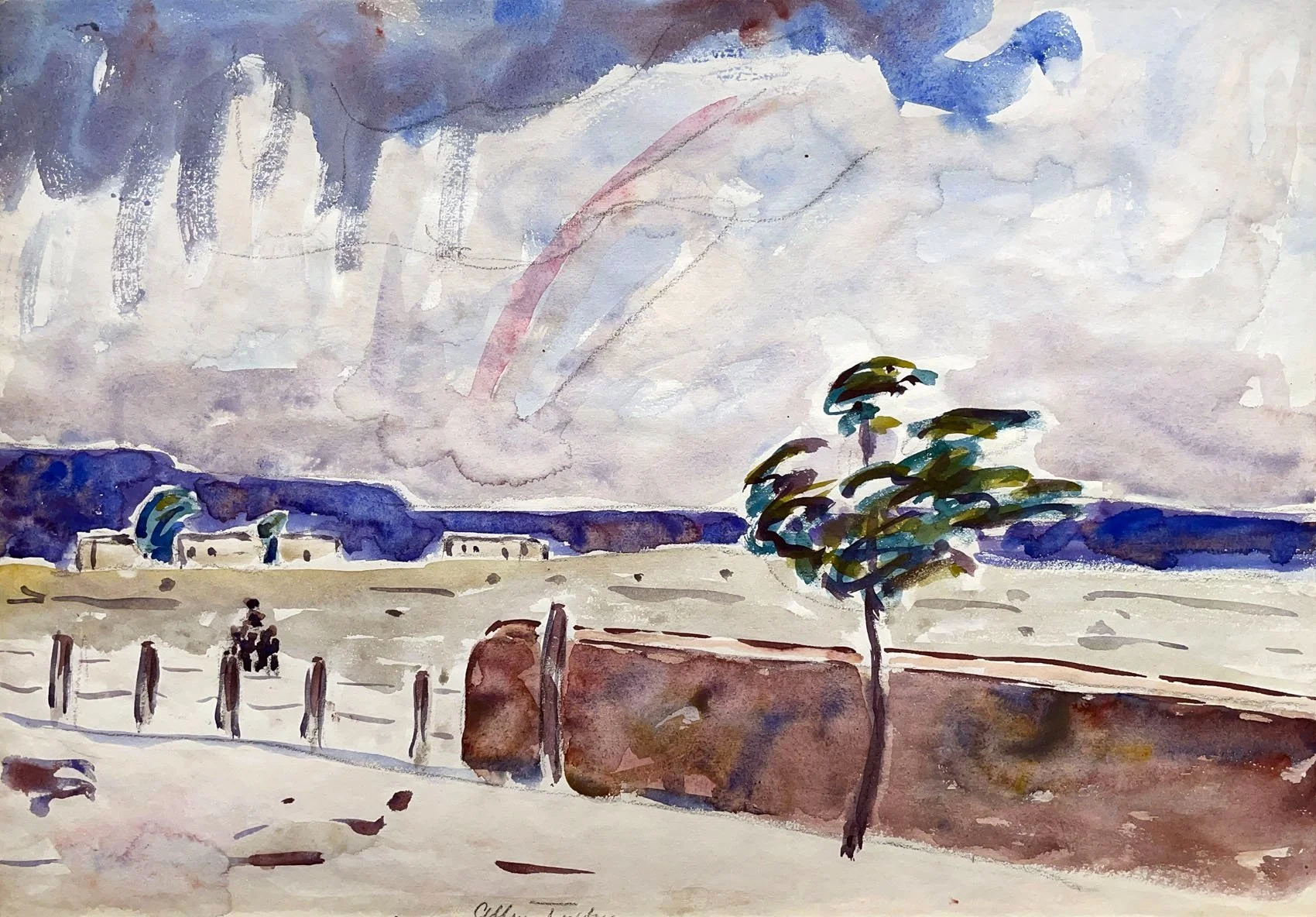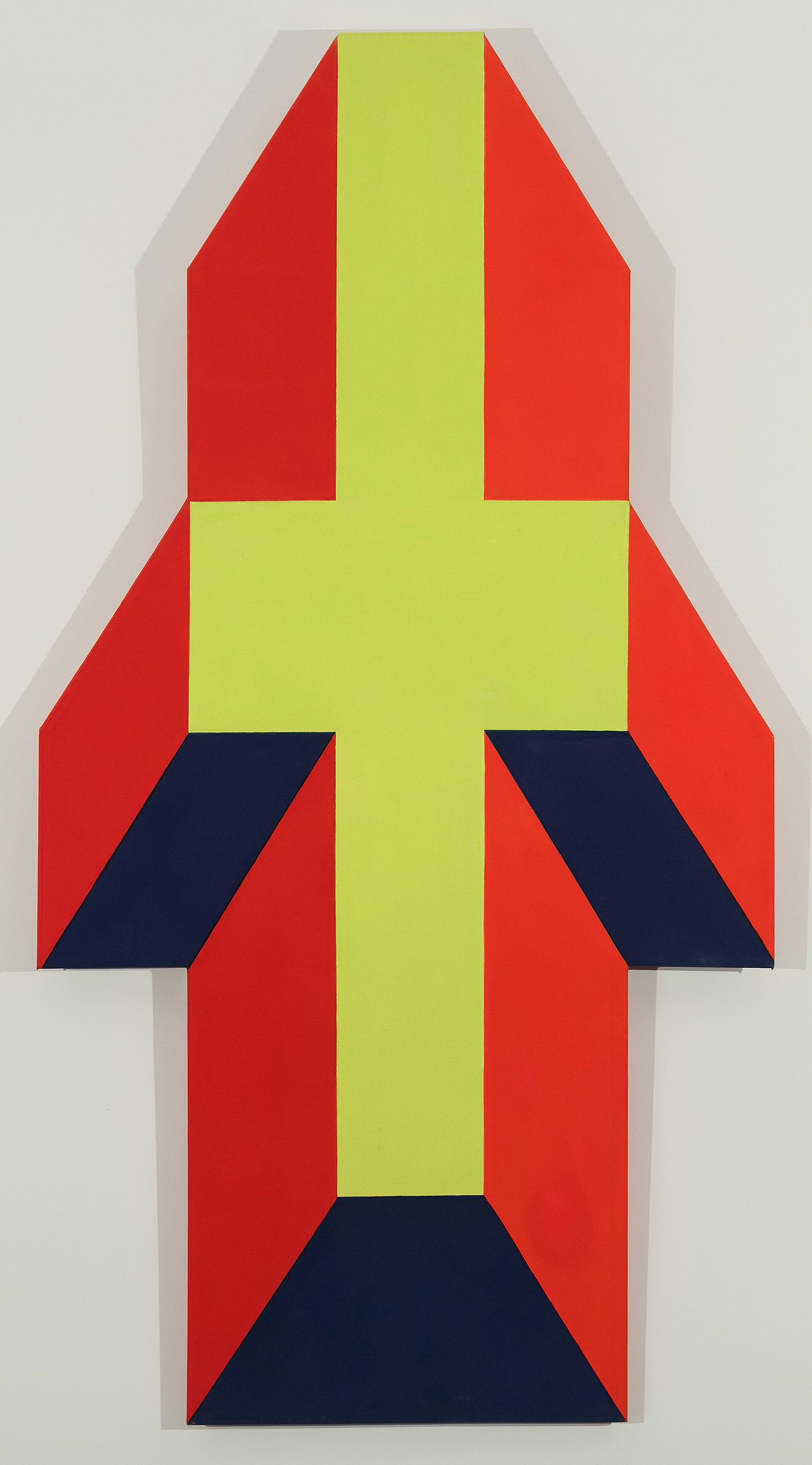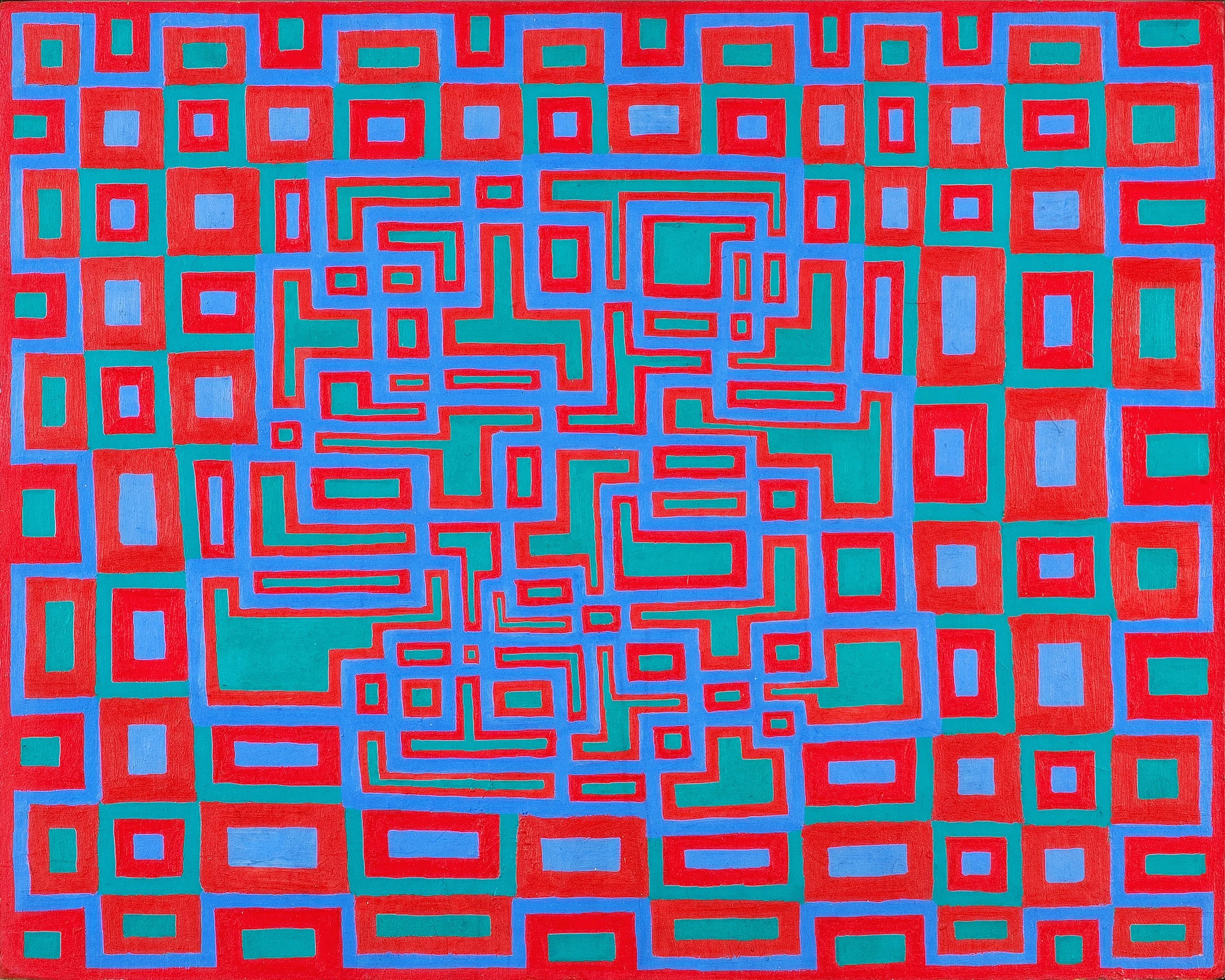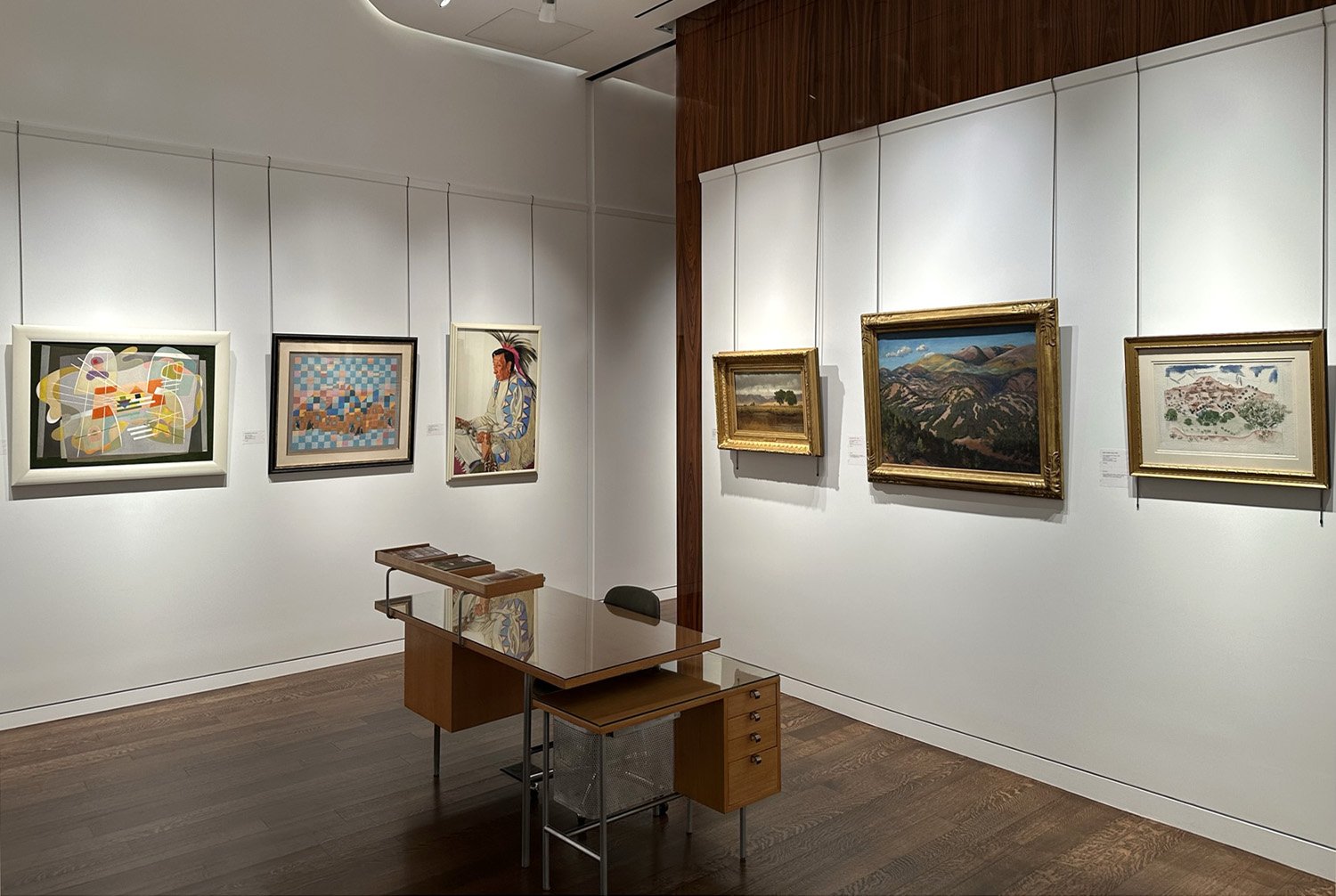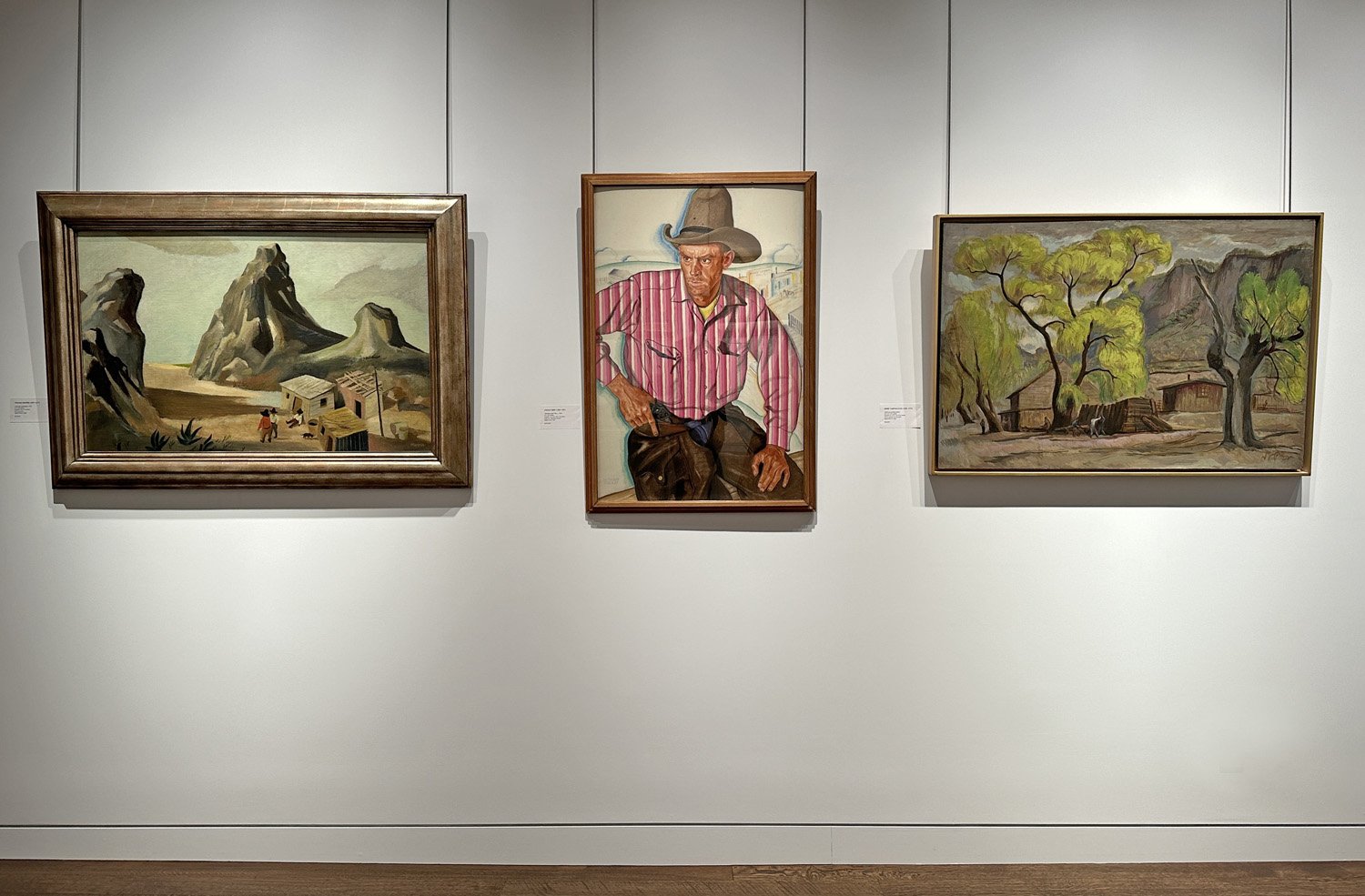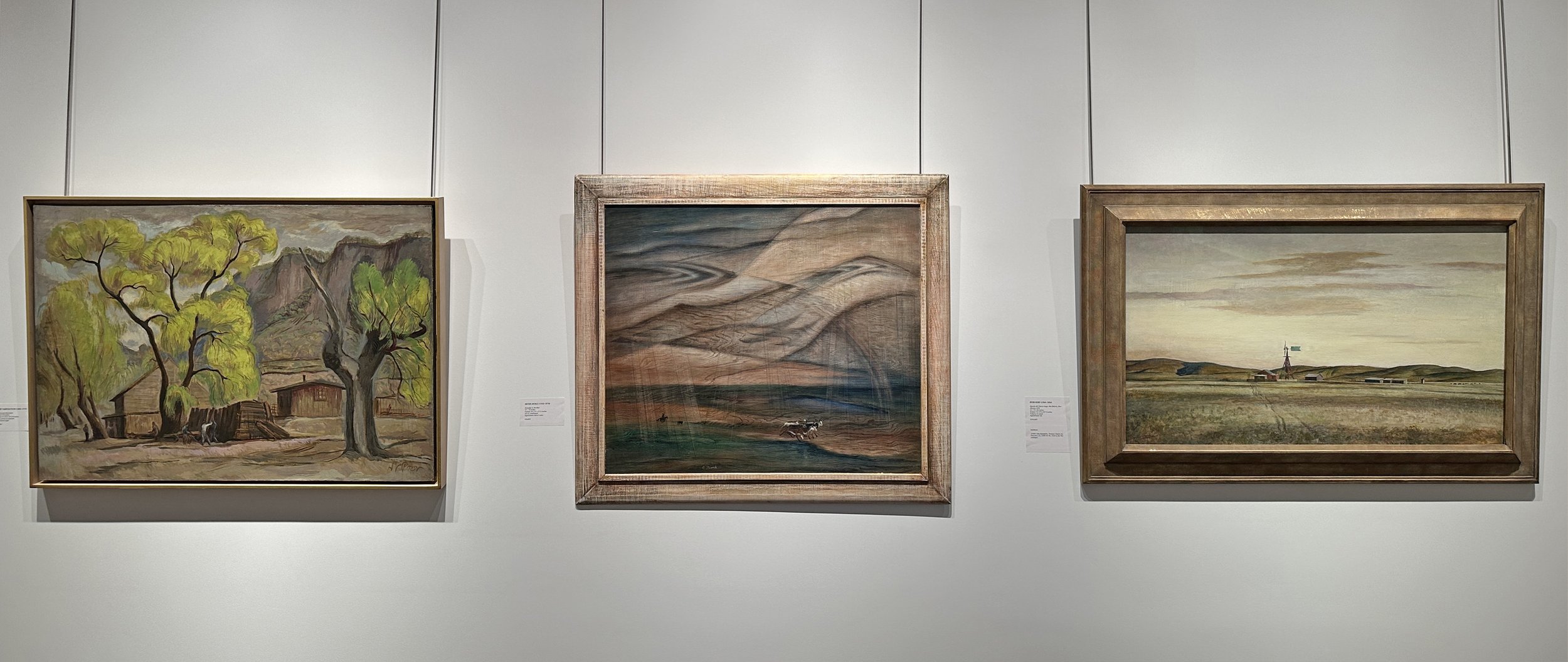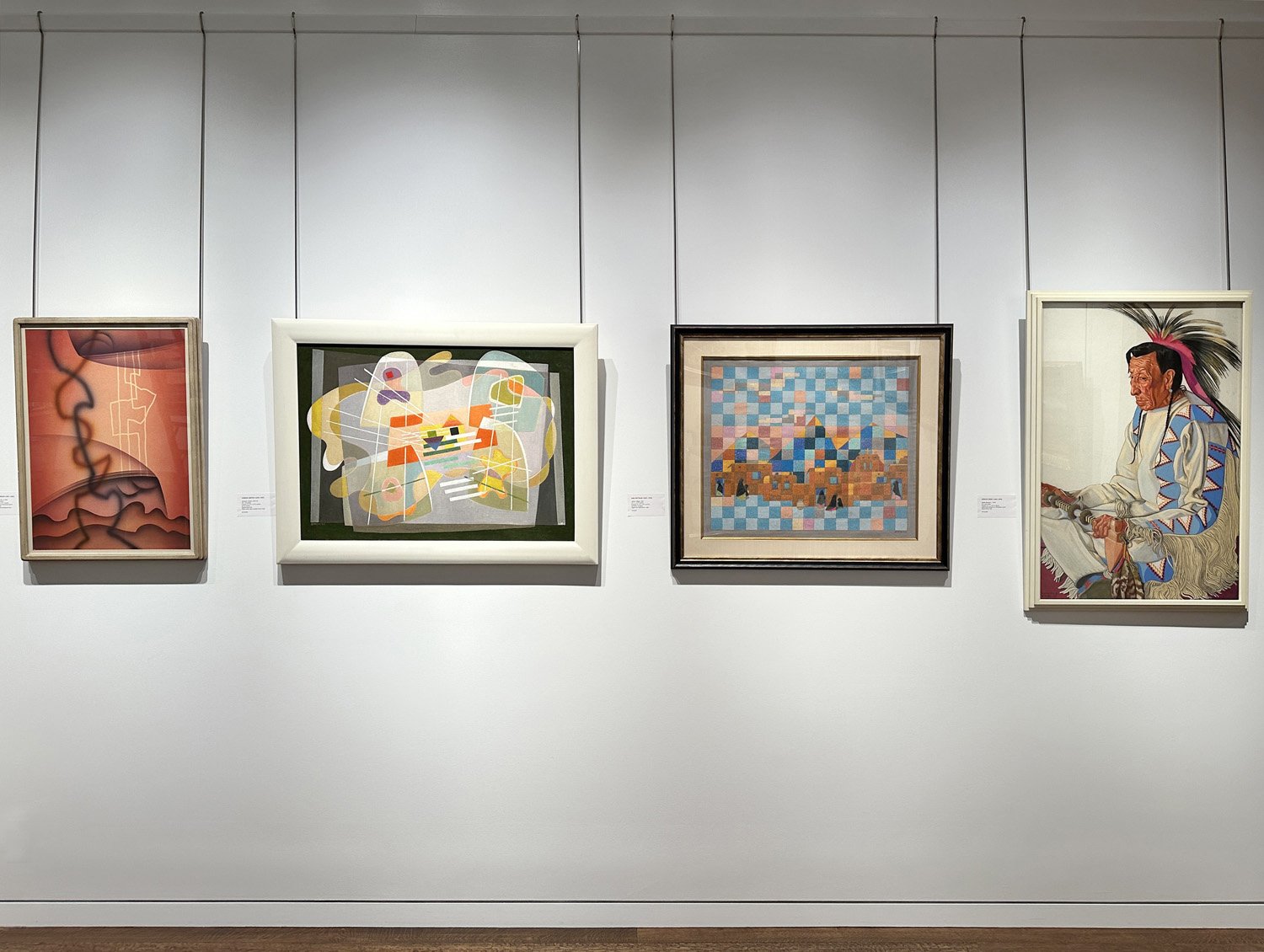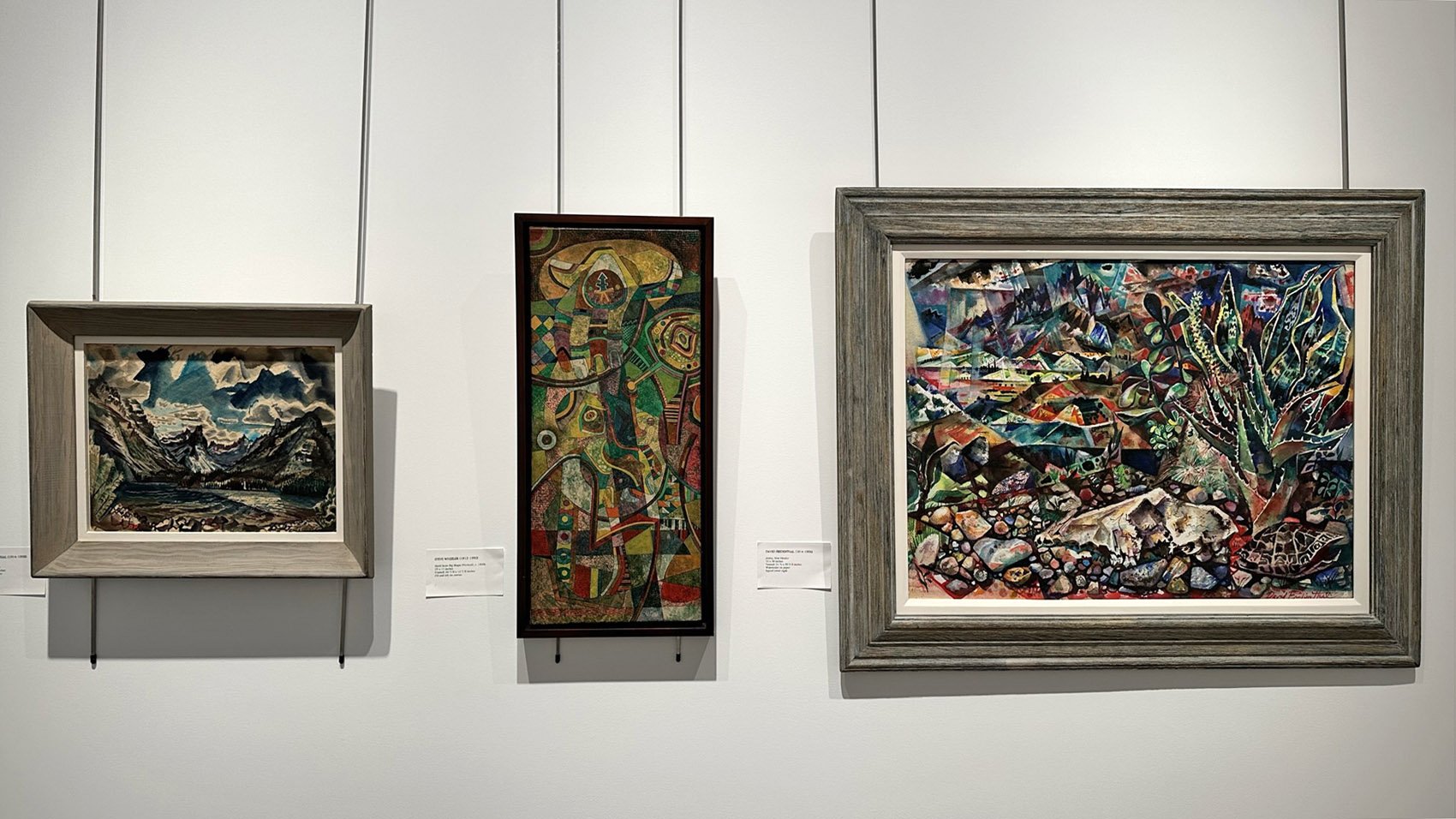Feb. 22 - May 19, 2023
Installation Views | Essay | For availability and pricing, call 212-581-1657.
Installation Views
Essay by Deedee Wigmore
Art has a role in expressing our national identity, values, and aspirations. The western states of Arizona, California, Colorado, Idaho, Montana, New Mexico, Texas, Utah, Washington, and Wyoming all have a particular fascination as their histories connect with frontier America and its Native American peoples. The first Americans to travel west and start new lives inspired successive generations and shaped the national imagination- ultimately the American character which is individualistic, self-reliant, and democratic. The America spirit was formed in the crucible of the west. For Americans the west was seen as a mythical land of personal and economic opportunity.
THE FIRST ARTISTS TO TRAVEL WEST
ALBERT BIERSTADT
In the 1850s the Western Territories of the United States awaited both settlers and its visual historians. The way west was by inland waterways. In 1859 Albert Bierstadt (1830-1902), a German-born artist based in New York, traveled to St. Joseph, Missouri to join Colonel Frederick Lander’s party planning the Pacific Railway Survey. Bierstadt made it to the south pass of the continental divide and returned to New York with sketches, photographs, and Indian artifacts. As it was unsafe to travel without a military escort, Bierstadt’s second trip west was not until 1863, this time going overland to California following the old Oregon Trail. Bierstadt returned to California for a two year stay in 1871 and in 1880 visited Yosemite for the first time. Bierstadt is represented in our exhibition by Western Mountain Scene.
WORTHINGTON WHITTREDGE
Worthington Whittredge (1820-1910), born near Springfield, Ohio accompanied General John Pope on a survey of Colorado and New Mexico in 1866. Whittredge made a second journey west in 1870 to Colorado and Wyoming with Sanford R. Gifford and John F. Kensett. A further trip west to the Platte River region of Colorado in 1871 was followed by trips to Mexico in 1893 and with Frederic Church in 1896. The painting Platte River from Whittredge’s first trip west is included in our exhibition.
RALPH BLAKELOCK
Ralph Blakelock (1847-1919), a native New York artist, made a trip up the Missouri River through the territories of the Lakota Sioux, Arikara, Mandan, Assiniboine, and Gros Ventre Indian lands unaided by military escort. At Fort Pierre Blakelock hooked up with government-contracted trappers who moved between military forts. Where the Missouri meets the Yellowstone in Montana Territory, Blakelock stayed with the Assiniboines. Perhaps this stay caused Blakelock to adopt the Indian arrowhead as part of his signature and to paint Indians in a peaceful setting where they exist in harmony with nature. By 1870 Blakelock was able to make his way by train to Colorado and then traveled by horse through Wind River and the Teton Range. In the Snake River Valley, Blakelock lived with the Uintah Indians. In Blakelock’s third trip west in 1871, he traveled through southern and central Colorado to the Paiute Indians of the Nevada desert.
In executing detailed panoramic views of unspoiled American wilderness, each of these artists paid homage to the Hudson River School. However, by 1884 Ralph Blakelock has become interested in Tonalism. His friends in the Tenth Street Studio Building had become John Francis Murphy, George Inness, Alexander Wyant, and Dwight Tryon. This group of artists endeavored to capture depth, different times of light and shadow, and a new kind of color and tone. Blakelock’s Indian Encampment in our exhibition embraces this new style with loose brushwork, informal composition, and atmospheric use of color aimed to combine both the real and the ideal to convey a spiritual correspondence between art and nature.
INCREASING ACCESSIBILITY TO THE WEST
ERNEST LAWSON
As the West became accessible by rail and telegraph, western art developed new patterns of expression that were more Impressionist. Although born in Halifax, Canada, Ernest Lawson (1873-1939) grew up in Kansas City, Missouri and spent time in France where he began to apply the Impressionist style to modern urban scenes and landscapes. Lawson traveled west in 1927 to teach at the Broadmoor Art Academy in Colorado Springs. While there, he captured Colorado’s mining and ranching life in glowing transparent color with a paint application that gives a sensuous quality and tactile feel to the flat decorative surface, as seen in Little Ranch, Colorado.
JOHN SLOAN
John Sloan (1871-1951) was born in Lock Haven, Pennsylvania and developed as an artist in Philadelphia at the Pennsylvania Academy of the Fine Arts. By 1909 Sloan was applying a realist style to a broad array of urban subjects for which he became famous. Sloan first visited the Southwest at the suggestion of Robert Henri the summer of 1919. In Santa Fe, John Sloan found a region of incredible color and startling natural grandeur that caused him to see landscape itself as his subject. Culebra Range, Early Autumn, 1923 reflects the variety and complexity of the landscape. From 1919 to 1950, Sloan spent half the year in New Mexico. In the beginning, Sloan had a free studio space built for visiting artists in the courtyard of the Museum of New Mexico. The museum offered this to nationally known artists to draw attention to the region and culture. A change in attitude to Indian culture took place between 1920 and 1930 and there were now efforts to preserve it through education, training programs, and sales outlets for self-sufficiency. Eventually Sloan purchased an adobe house, adding a studio and viewing tower. He traveled out to paint geometric formations and portrayed the surviving customs of the Indians and the Anglo or Mexican cultures with monumental figures anchored in the landscape. Sloan’s New Mexico paintings executed with bold color started with a monochromatic underpainting upon which oil varnish glazes were superimposed. This technique allowed separation of form and color. Immersed in the cultural life of Santa Fe with full sympathy and respect, Sloan arranged the first exhibition of contemporary Indian paintings in New York in 1920 at the Society of Independent Artists, where he was president from 1918 to 1945.
JOHN MARIN
John Marin (1870-1953), a native New Jersey artist, traveled to Taos, New Mexico with his wife and son the summers of 1929 and 1930. He was 49 years old and an established artist. As a guest of Mabel Dodge Luhan, Marin borrowed her car to explore the surrounding area. He had been told the Taos scene would suit him as it fostered experimentation across artistic media and particularly in watercolor. Marin quickly adjusted his eyes and used his rare genius for locating the right place within the landscape to create a strong composition. Marin executed map-like portraits of the Taos area in watercolors filled with light and space. These works connected to Pueblo Indian watercolors, which had a distinctive style that relied on outline and color without modeling or perspective. Marin’s watercolors are quite specific as landscapes, while focused on line, pattern, color, arrangement, and structure. John Marin created 94 New Mexico watercolors out of his two visits to Taos. In them one gets a sense of the eternal through natural earthbound symbols.
THE AMERICAN SCENE IN WESTERN STATES
ARNOLD BLANCH, ADOLF DEHN, WILLIAM GROPPER, PETER HURD, YASUO KUNIYOSHI, ARCHIE MUSICK, DALE NICHOLS, AND WINOLD REISS
During the period 1930-1945 there was much debate about what constituted an American place. Regionalism or American Scene art aimed to rediscover America with art dedicated to embodying the values, aspirations, and past achievements of its people. This kind of realism became the mission statement of the federally funded national arts program of the Depression era. The program called for images of daily life or historical events presented in a realistic style with a message that all Americans could understand. Although demographics had shifted from farms and small towns to cities, regionalist subjects in the American Scene style were the central art story from 1930 to 1945. Many significant artists traveled to paint and teach in our western states. Adolf Dehn (1895-1968), Arnold Blanch (1896-1968), and William Gropper (1897-1977) all painted Colorado. Yasuo Kuniyoshi (1889-1953) showed us Virginia City, Nevada. Winold Reiss (1886-1953) painted the cowboys and Indians he knew in Montana. Dale Nichols (1904-1995) and Peter Hurd (1904-1984) painted the landscape, bright light, and changeable weather of Arizona and New Mexico.
ABSTRACT VISIONS OF THE WEST: FROM NEW YORK AND NEW MEXICO
Significant changes in art styles occurred between 1913 and 1930 in America. The emphasis on the geometry of Cubism and the exploration of color relationships resulted in an effort to paint nature’s underlying structure. Modernism became a march to abstraction. The first exhibition of French Surrealism was held at the Wadsworth Atheneum in 1931. Surrealism created elements of surprise through unexpected juxtapositions, which produce unconscious associations allowing the incorporation of movement, chance, and time into art works. Surrealism helped develop a more systematic and serious attitude towards the subconscious as an essential source of art and influenced some artists to challenge the assumption that a geometric abstraction had to be mathematical and rational. By 1937 European abstraction had developed a following in America, which led to the founding of the New York group American Abstract Artists. By exhibiting together, these forty artists aimed to build an audience for abstraction in America. They were greatly aided by Hilla Rebay’s development of the Museum of Non–Objective Painting which gave them additional opportunities to exhibit their work.
ILYA BOLOTOWSKY, WERNER DREWES, AND CHARLES GREEN SHAW
Ilya Bolotowsky (1907-1981), a Russian immigrant who grew up in New York and was a founding member of the American Abstract Artists, is represented in our exhibition by Centennial, 1949, which was inspired by the abandoned Wyoming mining town of Centennial. Bolotowsky headed the art department at the University of Wyoming from 1948 to 1957 after teaching at Black Mountain College, Ashville, North Carolina in 1946-48.
The development of abstraction in America widened the acceptance and interest in Native American Indian culture. Our exhibition offers paintings by two other member of the American Abstract Artists group: Artifact, 1941 by Charles Green Shaw (1892-1974) and Indian Motif, 1943 by Werner Drewes (1899-1985). These paintings evoke Indian design ideas.
EMIL BISTTRAM AND RAYMOND JONSON
In New Mexico the Transcendental Painting Group was active from 1938 to 1942. The group included ten artists: Raymond Jonson, Agnes Pelton, Emil Bisttram, Lawren Harris, Florence Miller Pierce, Ed Garman, Horace Towner Pierce, Robert Gribbroek, Stuart Walker, William Lumpkins, and Dane Rudhyar. Hilla Rebay saw the Transcendental Painting Group at the 1939 Golden Gate International Exposition in San Francisco and invited them to exhibit at The Museum of Non-Objective Painting. The group’s goal was to carry painting beyond the appearance of the physical world through new concepts of space, color, light, and design to help imagine an idealistic and spiritual world. In Santa Fe exposure to Indian prayer dances underlined the awareness of powerful forces in the world that connected with Surrealist thought. Our exhibition offers examples by the two founders of the Transcendental Painting Group: Raymond Jonson (1891-1982), an Iowa artist, who first visited Santa Fe in 1922 and Emil Bisttram (1895-1976), a New York artist born in Hungary, who first visited Taos in 1930.
Emil Bisttram settled in Taos, New Mexico in 1932 and founded the Taos School of Art. He had been in Mexico in 1931 supported by a Guggenheim Fellowship to study fresco painting with Diego Rivera. This experience allowed Bisttram to compete successfully for and achieve murals for various public buildings in a representational style for the Works Progress Administration. At the same time Bisttram was evolving abstract images of Indian design such as Kachina With Headdress and landscapes like Woven Landscape. The abstraction titled Adobe Village, 1936 was developed by Bisttram out of Pointillism, replacing the dots of pure color with squares to express in a geometric way an adobe community. Raymond Jonson settled permanently in Santa Fe in 1924. As he acquainted himself with the landscape and changing light, his landscapes evolved from modernly representational to pure abstraction. In our exhibition, Jonson’s Casein Tempera No. 5, 1938 offers a feeling of the desert’s response to extremes of weather as symbolized lightning strikes and both land and air respond. Like Emil Bisttram, Raymond Jonson was able to compete for and achieve two representational murals in New Mexico in 1934 under the auspices of the Public Works of Art Project. Both of these artists used abstract symbols to represent invisible life forces.
THE WEST IN POSTWAR ABSTRACTION
RICHARD ANUSZKIEWICZ, JIMMY ERNST, PAUL REED, AND STEVE WHEELER
Between 1930 and 1941, a wave of German and French abstract artists immigrated to the United States including Josef and Anni Albers, Werner Drewes, Herbert Bayer, and Laszlo Moholy-Nagy. These artists and Bauhaus teachers taught the next generation of American artists. Max Ernst, an orthodox Surrealist arrived in New York in 1941 and with his son Jimmy created Surrealist expressions of the New Mexico landscape.
By the end of World War II international styles became more attractive to Americans. By 1953 there was both an aesthetic and conceptual shift evident in western art. The expression of inner feelings in gestural abstraction seemed a natural evolution from Surrealism and Zen thinking. The new larger scale and working in a related series of paintings became accepted. Compositions became more reductive, hard edge, and were rooted in formal and conceptual concerns. Richard Anuszkiewicz (1930-2020), a student of Josef Albers, became fascinated with the new understanding of how the eye perceives space and using the interaction of color created a new kind of optical movement in his art. Untitled, 1961 in our exhibition is an example of Anuszkiewicz’s proto-Op style adapted from Indian symbols. In another style of geometric abstraction, Paul Reed (1919-2015), a member of the Washington Color School, made a shaped canvas of a monumental cross, evoking a New Mexican adobe church and creating a spiritual response for the viewer. Steve Wheeler (1912-1992), the Indian Space Group artist, uses ancient native symbols full of pattern, message, and color in rhythmic, flat design to give the viewer both emotional feelings and technical realism. Primitivism is an important but elusive element.
These western-inspired American paintings speak to art’s role to build bridges between cultures across space and time.







